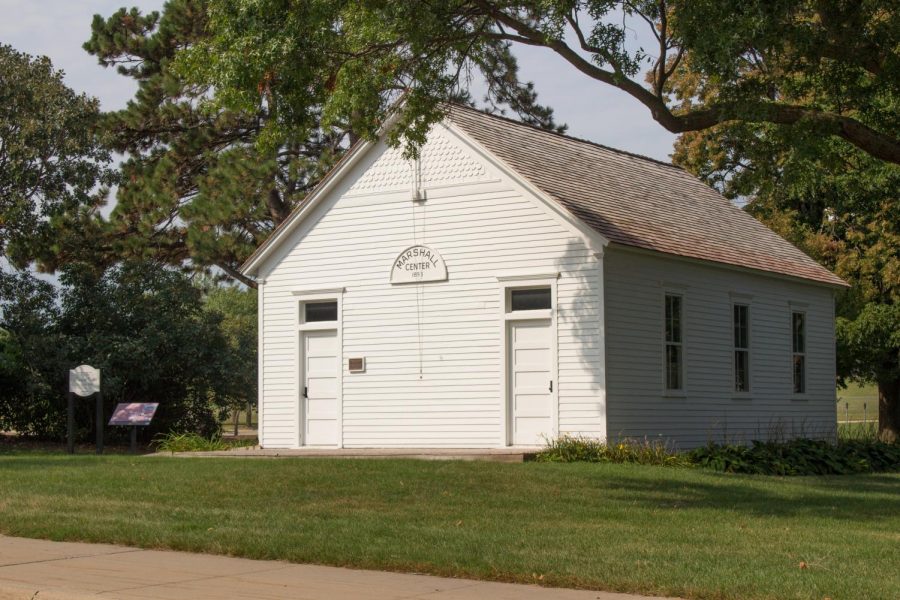Schoolhouse fashion flashback
UNI’s one-room schoolhouse is located behind the Student Health Center and plays host to different events throughout the year.
Mar 1, 2018
On Saturday, Feb. 24, the Friends of the UNI Museum held its sixth presentation of the Rural Schoolhouse Speaker Series at the Marshall Center School.
According to the UNI website, the school was built in 1893. At that time, it served as a one-room schoolhouse to teach students from first through eighth grade. The building was used until 1986. In 1987, UNI moved the structure to its current location behind the Student Health Center to commemorate the campus’ position as a teacher’s college.
The focus of the one-room schoolhouse today is to serve as a historical site, offering educational programs for the students at UNI and the general public. Amy RohrBerg, an associate professor of theatre, is one of the board members of the Friends of the UNI Museum. RohrBerg helped organize the Rural Schoolhouse Speakers Series.
“I was surprised when we started to create this lecture series for the Rural Schoolhouse Speaker Series,” Rohrberg said. “The one-room schoolhouse structure or system in the state was so prevalent that everyone that is still alive and lives here has a memory of it, either being a student, or knowing someone who taught [in a schoolhouse].”
RohrBerg also emphasized the importance of the Rural Schoolhouse Speaker Series in reminding a contemporary audience where they came from.
“You hear that phrase, ‘If you know your history you don’t repeat any mistakes,’” RohrBerg said. “It’s just interesting to know that what we have now, with all of our technology and all of the variety, that we have really started with a whole bunch of kids in a little tiny place with a teacher who might have been only three years older than they were, trying to give them an education.”
RohrBerg’s presentation focused around 1920’s apparel. According to RohrBerg, the former UNI Museum president began the research in 2002. After it had been completed, the research allowed for schools to bring their students to the schoolhouse. This could give these students an experience that resembled a schoolhouse in the 1920’s in Iowa. To do this, they would dress the students who came to the events in 1920’s apparel.
RohrBerg’s research was heavily focused on recreations of 1920’s apparel as historically accurate as possible, while at the same time making it accessible for the students who came to the event, so that they could feel immersed in the experience of the one-room schoolhouse.
“What we were looking for was commonalities in what we saw, and mostly it was in those photographs of the classes,” RohrBerg said. “You would see photographs of the whole school with teachers and administrators in the back row, and all for the children in front. They may be out on the front porch or out in the backyard, and you could see commonalities about what were fashion trends that were being worn.”
One of the attendees at the event was President of the UNI Museum Jim Ehmem. Ehmem is a retired elementary school teacher, who received both of his degrees from UNI. He spoke about his reasoning for becoming a friend of the UNI Museum.
“Part of it has to do with the history,” Ehmem said. “How are we to maintain the history of education? […] It goes back to the same point of, we can’t just throw things away from our past; there has to be way to maintain them and being able to utilize them to learn from our past.”









